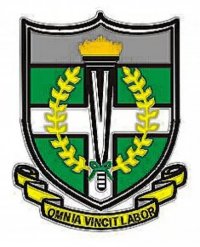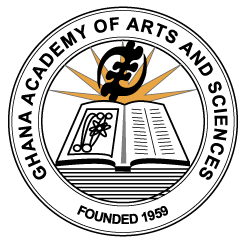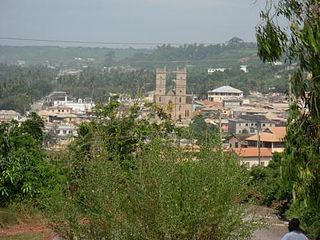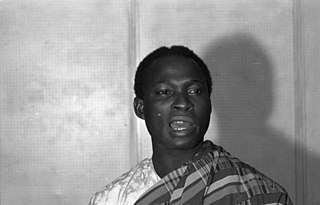
Accra is the capital and largest city of Ghana, located on the southern coast at the Gulf of Guinea, which is part of the Atlantic Ocean. As of 2021 census, the Accra Metropolitan District, 20.4 km2 (7.9 sq mi), had a population of 284,124 inhabitants, and the larger Greater Accra Region, 3,245 km2 (1,253 sq mi), had a population of 5,455,692 inhabitants. In common usage, the name "Accra" often refers to the territory of the Accra Metropolitan District as it existed before 2008, when it covered 199.4 km2 (77.0 sq mi). This territory has since been split into 13 local government districts: 12 independent municipal districts and the reduced Accra Metropolitan District (20.4 km2), which is the only district within the capital to be granted city status. This territory of 199.4 km2 contained 1,782,150 inhabitants at the 2021 census, and serves as the capital of Ghana, while the district under the jurisdiction of the Accra Metropolitan Assembly proper (20.4 km2) is distinguished from the rest of the capital as the "City of Accra".
Wesley Girls' High School (WGHS) is an educational institution for girls in Cape Coast in the Central region of Ghana. It was founded in 1836 by Harriet Wrigley, the wife of a Methodist minister. The school is named after the founder of Methodism, John Wesley.
Ama Benyiwa-Doe aka Ama Chavez was a Ghanaian politician who served as Regional Minister for Central Region.
The United Gold Coast Convention (UGCC) was an early nationalist movement with the aim of self-government " in the shortest possible time" founded in August 1947 by educated Africans such as J.B. Danquah, A.G. Grant, R.A. Awoonor-Williams, Edward Akufo Addo, and others, the leadership of the organisation called for the replacement of Chiefs on the Legislative Council with educated persons. whose aim was to bring about Ghanaian independence from their British colonial masters after the Second World War. The United Gold Coast Convention appointed its leaders to include Kwame Nkrumah, who was the Secretary General. However, upon an allegation for plans against Nkrumah's leadership, he was arrested and jailed. The UGCC leadership broke up and Kwame Nkrumah went on a separate way to set up the Convention People's Party (CPP) for the purpose of self-governance. The UGCC was founded in Saltpond.

St. Augustine’s College is an all-male boarding academic institution in Cape Coast, Ghana. As the first catholic school established in Ghana, the school started at Amissano, a village near Elmina, in 1930. The Roman Catholic institution was established to serve as a training college and seminary. The school was named after St. Augustine of Hippo. The motto of the college is Omnia Vincit Labor, meaning "Perseverance conquers All". The school has a total of 12 houses.

Dr. Kwame Nkrumah was the first Prime Minister and first President of Ghana. Nkrumah had run governments under the supervision of the British government through Charles Arden-Clarke, the Governor-General. His first government under colonial rule started from 21 March 1952 until independence. His first independent government took office on 6 March 1957. From 1 July 1960, Ghana became a republic and Nkrumah became the first president of Ghana.

The Ghana Academy of Arts and Sciences (GAAS) is a learned society for the arts and sciences based in Accra, Ghana. The institution was founded in November 1959 by Kwame Nkrumah with the aim to promote the pursuit, advancement and dissemination of knowledge in all branches of the sciences and the humanities.

Mfantsiman Municipal Assembly is one of the twenty-two districts in Central Region, Ghana. Originally created as an ordinary district assembly in 1988 when it was known as Mfantsiman District, which was created from the former Mfantsiman District Council; until it was later elevated to municipal district assembly status on 29 February 2008 to become Mfantsiman Municipal District. However, on 28 June 2012, the eastern part of the district was split off to create Ekumfi District; thus, the remaining part has been retained as the Mfantsiman Municipal Assembly. The municipality is located in the southwest part of Central Region and has Saltpond as its capital town.

Francis Kofi Ampenyin Allotey was a Ghanaian mathematical physicist. Together with Daniel Afedzi Akyeampong, he became the first Ghanaian to obtain a doctorate in mathematical sciences, earned in 1966.

Kofi Baako (1926-1984) was a Ghanaian sportsman, teacher and politician. He served as Minister for Defence in the Nkrumah government during the First Republic of Ghana until it was overthrown in 1966. He was also held various other ministries throughout the reign of the Convention People's Party.
Akua Asabea Ayisi was a feminist, former High Court Judge and the first female Ghanaian journalist. During the rise of the Ghanaian independence movement, Akua Asabea Ayisi trained as a journalist with Mabel Dove-Danquah and Kwame Nkrumah, who would later become the country's first prime minister and president.
Mfantsiman Girls' Senior High School is an all-girls second cycle institution in Saltpond in the Central Region of Ghana. The school was founded in 1960 by Kwame Nkrumah, originally under the name Saltpond Girls' Secondary School. The school is also known as 'Syte'.
Edward Benjamin Kwesi Ampah Jnr, also known by the name Eddie Ampah, was a Ghanaian author and politician. He was the member of parliament for the Asebu constituency from 1965 to 1966.
Kobina Hagan (1923-1977) was a Ghanaian politician and teacher. He was the Principal Secretary for the Central Organisation of Sports (COS) from 1960 to 1963 and later member of parliament for the Denkyira constituency from 1965 to 1966.
Kojo Tsikata was a Ghanaian military officer and politician, who served as the Head of National Security and Foreign Affairs of the Provisional National Defence Council (PNDC). He was listed as a retired army captain in the Ghana Army.
Kweku Budu-Acquah was a Ghanaian politician and diplomat. He served as Ghana's first ambassador to Somalia and Ghana's resident Minister in Guinea from 1962 to 1964. He served as Ambassador Extra Ordinary and Minister Plenipontentary from 1964 until 1966 when the Nkrumah government was overthrown.
Anthony Kobina Woode was born on 1 February 1923. A trade unionist, he actively participated in the movement for independence in the Gold Coast, later to become Ghana.











